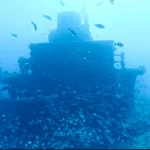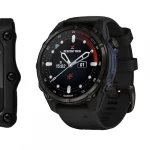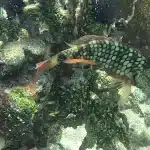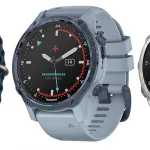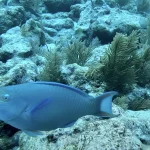Table of Contents
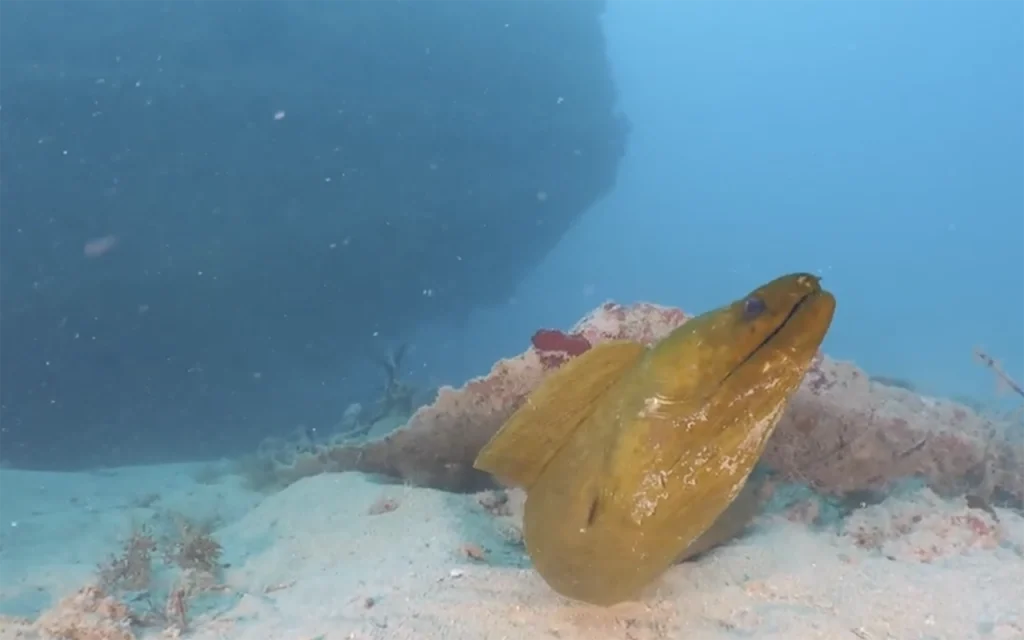
The combination of historical significance, structural features, diverse marine life, and accessible yet challenging conditions makes the Tortuga wreck a unique and memorable diving experience.
Article at a Glance
- Cinematic History: The Tortuga wreck was intentionally sunk in 1995 as part of the climax for the film “Fair Game,” starring Cindy Crawford and William Baldwin, making it a unique dive site with a cinematic backstory.
- Diverse Marine Habitat: The wreck has become an artificial reef, attracting a variety of marine life, including barracuda and schoolmaster snapper, providing divers with vibrant underwater experiences.
- Accessibility: Located about 5 miles north of Government Cut in Miami, the wreck is accessible only by boat, making it a popular destination for local dive operators.
- Diving Conditions: The wreck lies at a depth of 115 feet, with the deck at approximately 90 feet, suitable for advanced open water divers due to potential strong currents and varying visibility.
- Intact Structure: Key features of the wreck include an intact wheelhouse and twin propellers, which divers can explore while navigating through large openings created for safety.
- Dive Recommendations: Divers are advised to start their descent against the current to ensure a safer and more manageable dive experience.
- Safety Precautions: Given the depth and conditions, proper dive planning, including equipment checks and adherence to safety protocols, is essential for a successful dive at the Tortuga wreck.
Shipwreck Location Coordinates and Depth
Depth
- Maximum Depth: 115 feet (approximately 35 meters)
- Deck Depth: About 90 feet (approximately 27 meters)
Location Coordinates
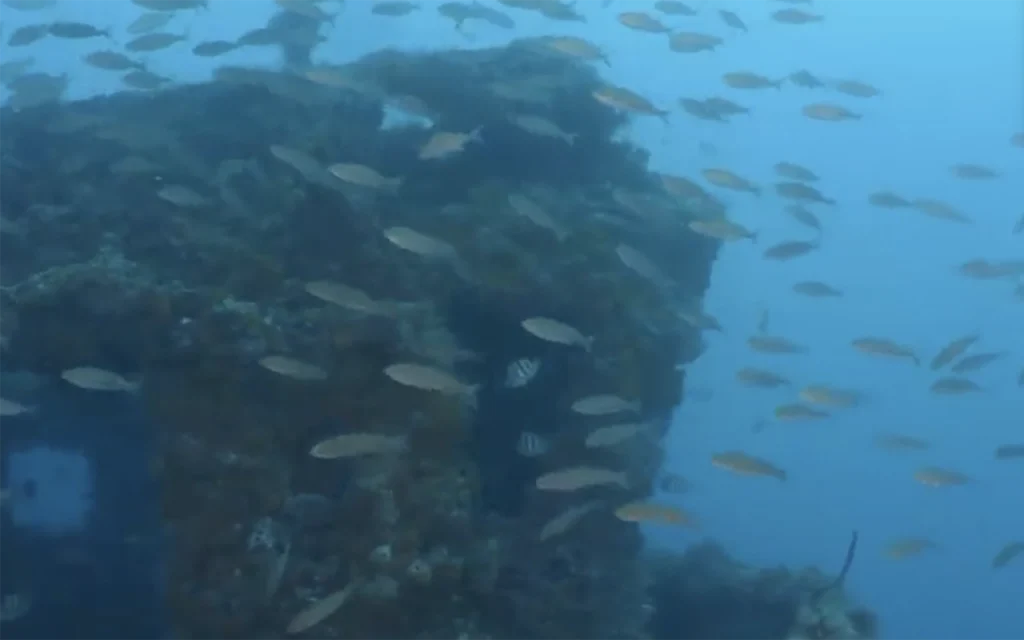
What Do Scuba Divers Say About This Ship
- Accessibility: The Tortuga wreck is described as “fairly easy for the trained wreck diver” due to its large openings. This suggests that while it’s suitable for experienced divers, it’s not overly challenging.
- Depth and Position: Divers report that the wreck is upright in 115 feet of water, with the deck at about 90 feet. This depth range makes it accessible for advanced recreational divers.
- Marine Life: Divers can expect to see a diverse array of marine life around the Tortuga wreck. While not specifically mentioned for this wreck, similar dive sites in the region are known for white tip sharks, moray eels, puffer fish, and large schools of tropical fish.
- Dive Quality: The Tortuga wreck is described as a “great dive spot” by those who have experienced it. This indicates that divers generally find the site rewarding and enjoyable.
- Historical Interest: Some divers appreciate the wreck’s backstory, noting that it was intentionally sunk on April 25, 1995, for the climax of the movie “Fair Game”4. This adds an interesting historical element to the dive experience.
- Safety and Guidance: While not specific to the Tortuga wreck, divers in the region generally praise the quality of dive briefings, knowledgeable guides, and attention to safety details. This suggests that diving operations in the area, including those visiting the Tortuga wreck, prioritize diver safety and education.
What Kind of Marine Life Can Be Found on The Ship
- Boxfish: These distinctive, boxy-shaped fish are reported to be present around the wreck.
- Snapper: Various species of snapper are commonly spotted by divers exploring the Tortuga.
- Barracuda: These predatory fish are frequently seen in the vicinity of the wreck.
- Abundant growth: The wreck is described as having “a good amount of growth,” which likely attracts and supports various marine species.
- Tropical fish: Large schools of tropical fish are known to inhabit the area, though specific species are not mentioned in the provided results.
While not specifically mentioned for the Tortuga wreck, similar dive sites in the region are known to host:
- White tip sharks: These sharks are sometimes spotted in the area.
- Moray eels: These elusive creatures may be found hiding in the wreck’s crevices.
- Puffer fish: Another interesting species that divers might encounter.
Key Information
| Aspect | Details |
|---|---|
| Location | 5 miles north of Government Cut, Miami, Florida |
| Coordinates | 25° 49.254′ N, 80° 05.086′ W |
| Depth | 115 feet (35 meters) |
| Deck Depth | 90 feet (27 meters) |
| Type of Vessel | Offshore supply vessel |
| Length | 165 feet (50 meters) |
| Date Sunk | April 25, 1995 |
| Purpose of Sinking | For the climax of the movie “Fair Game” |
| Sinking Method | 40 pounds of dynamite |
| Movie Stars | Cindy Crawford, William Baldwin |
| Dive Difficulty | Suitable for Advanced Open Water divers |
| Visibility | 10-30 meters (average 25 meters) |
| Current | Often strong |
| Marine Life | Barracuda, schoolmaster snapper |
| Notable Features | Intact wheelhouse, twin propellers |
| Dive Recommendation | Start dive against the current |
| Access | Only by boat |
| Artificial Reef Site | Yes |
What Makes The Tortuga Wreck a Unique Diving Experience
Historical Significance
The Tortuga wreck is not just any sunken vessel; it was intentionally sunk on April 25, 1995, for the climax of the movie “Fair Game,” starring Cindy Crawford and William Baldwin. This historical context adds an intriguing element to the dive, allowing divers to explore a piece of cinematic history.
Structural Features
- Large Openings: The wreck has large openings, making it accessible and relatively easy to navigate for trained wreck divers. These openings also enhance safety by providing multiple exit points.
- Intact Sections: Key parts of the ship, such as the wheelhouse and twin propellers, are still intact, offering interesting features for exploration and underwater photography.
Depth and Accessibility
- Depth Range: The wreck lies upright in 115 feet of water, with the deck at about 90 feet. This depth range makes it suitable for advanced open water divers.
- Location: Situated in the Pflueger Artificial Reef, about 8 kilometers north of Government Cut, the site is accessible via boat, making it a convenient dive location.
Marine Life
The Tortuga wreck is home to a diverse array of marine life, adding to its appeal:
- Common Species: Divers frequently spot boxfish, snapper, and barracuda around the wreck.
- Additional Marine Life: Other species commonly seen in similar wreck sites include white tip sharks, moray eels, puffer fish, and large schools of tropical fish.
Diving Conditions
- Visibility: Water visibility ranges between 10-30 meters, with an average of around 25 meters, providing clear views of the wreck and its surroundings.
- Currents: Divers should be aware of the often strong currents at the site, which can add an element of challenge and excitement to the dive.
How Does The Tortuga Wreck Compare to Other Shipwrecks in Florida
- Historical Context:
- The Tortuga wreck is relatively modern, intentionally sunk in 1995 for a movie.
- In contrast, many Florida shipwrecks have significant historical value, such as:
- Depth and Accessibility:
- The Tortuga lies at 115 feet, with its deck at 90 feet, making it accessible to advanced recreational divers.
- Other wrecks, like the Tortugas Shipwreck, lie in much deeper waters (405 meters), requiring specialized equipment and expertise.
- Preservation and Artifacts:
- The Tortuga, being a modern wreck, lacks historical artifacts.
- Historical wrecks like the Tortugas Shipwreck have yielded thousands of artifacts, providing valuable insights into maritime history.
- Research Value:
- While the Tortuga offers recreational diving, historical wrecks are often subjects of extensive archaeological research.
- For example, the Tortugas Shipwreck excavation recovered 16,903 shipboard objects, contributing significantly to our understanding of 17th-century maritime trade.
- Marine Life:
- The Tortuga, as an artificial reef, attracts various marine species.
- Older wrecks often have more established ecosystems due to longer periods underwater.
- Diving Experience:
- The Tortuga offers large openings, making it relatively easy for trained wreck divers to explore.
- Historical wrecks may be more fragmented or buried, offering a different exploration experience.
- Legal Status:
- The Tortuga is an intentionally sunk artificial reef.
- Many historical wrecks, like HMS Tyger, are protected under laws such as the Sunken Military Craft Act.
What is The Full History of This Ship
Sinking for Cinema
- Date of Sinking: April 25, 1995
- Event: The ship was intentionally sunk using 40 pounds of dynamite for the climax of the movie “Fair Game,” directed by Doug Liman and starring Cindy Crawford and William Baldwin. The dramatic scene involved the lead actors narrowly escaping the sinking vessel.
Specifications
- Length: Approximately 165 feet (50 meters)
- Location: The wreck is situated in the Pflueger Artificial Reef, about 8 kilometers north of Government Cut, Miami, Florida.
- Coordinates: 25° 49.254′ N, 80° 05.086′ W
- Depth: The wreck lies in about 115 feet (34 meters) of water, with the deck at around 90 feet (27 meters).
Diving Experience
- Accessibility: The wreck is accessible via boat, and divers are advised to use the anchor line to descend. It is recommended to start the dive against the current due to often strong currents in the area.
- Features: Key parts of the ship, such as the wheelhouse, upper deck, and propellers, remain intact. Large openings have been made in the wreck for safety reasons, making it suitable for trained wreck divers and underwater photographers.
- Marine Life: The wreck attracts various marine species, including barracuda and schoolmaster snapper.
Historical Context
- Previous Names: The vessel may have been previously known as Champion or Francia Express, though records are unclear.
- Artificial Reef: The Tortuga wreck now serves as an artificial reef, contributing to marine biodiversity and offering a unique dive site for enthusiasts.
Comparison to Other Shipwrecks Named “Tortuga”
There is another notable shipwreck referred to as the “Tortugas Shipwreck” from 1622, found by Seahawk Deep Ocean Technology in 1989 at a depth of 405 meters in the Straits of Florida. This wreck is a 17th-century Spanish ship, significantly different in historical context and diving conditions from the modern M.V. Tortuga.
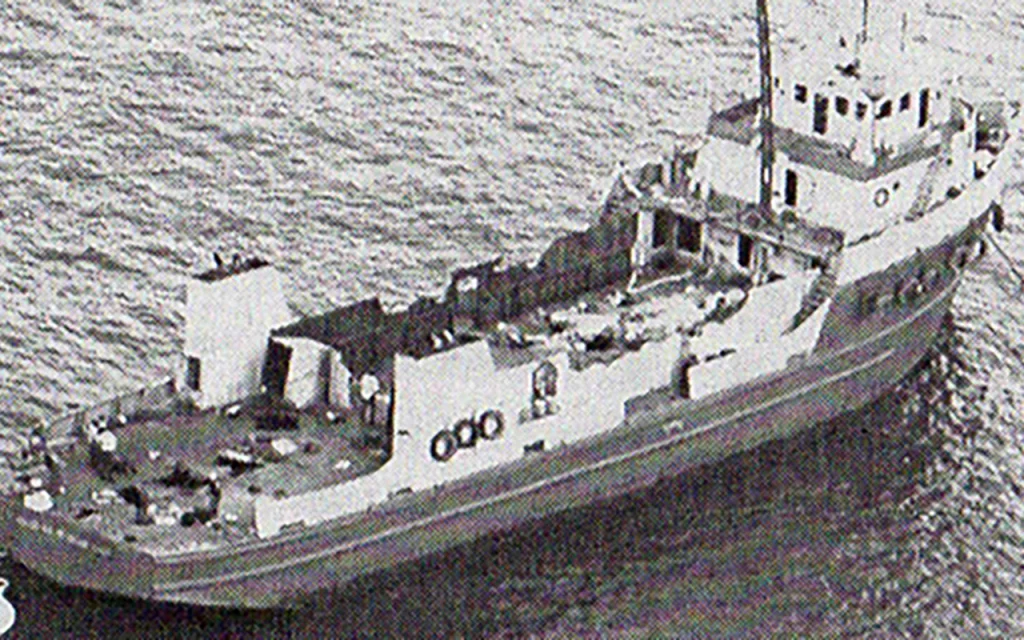
What Historical Features Can Still Be Identified on The Tortuga Wreck
- Wheelhouse: The ship’s wheelhouse remains intact and can be explored by divers.
- Twin propellers: Both propellers are reported to be intact, providing an interesting feature for divers to observe.
- Deck: The deck of the ship is located at about 90 feet depth, while the ship rests upright at 115 feet.
- Large openings: The wreck has large openings, likely created intentionally to make it safer and more accessible for divers to explore.
- Overall structure: The 165-foot steel ship remains largely intact, maintaining its basic shape and structure.
- Growth and marine life: While not strictly a historical feature, the wreck has developed “a good amount of growth,” which adds to its character as an artificial reef.
What Safety Measures Are in Place for Divers Visiting the Tortuga Wreck
Structural Safety Features
- Large Openings: The wreck has been modified with large openings to facilitate easy entry and exit, reducing the risk of entrapment for divers.
- Intact Features: Key parts of the ship, such as the wheelhouse and twin propellers, remain intact and accessible, providing clear and recognizable points of reference during the dive.
Diving Conditions
- Depth: The wreck lies at a depth of 115 feet, with the deck at about 90 feet. This depth is suitable for advanced open water divers.
- Currents: Divers are advised to be aware of the often strong currents at the site. It is recommended to start the dive against the current to manage energy and ensure a safer return to the boat.
- Visibility: Visibility ranges between 10-30 meters, with an average of around 25 meters, allowing divers to maintain good visual contact with the wreck and their dive buddies.
Pre-Dive Preparations
- Use of Anchor Line: Divers should use the anchor line to descend and ascend safely, helping to manage buoyancy and avoid drifting in strong currents.
- Equipment Check: Ensure all diving equipment is in good working order. This includes having a dive light, safety sausage, emergency mirror, whistle, and other necessary gear.
Dive Planning
- Dive Briefing: Prior to the dive, a comprehensive briefing should be conducted to cover the layout of the wreck, entry and exit points, expected currents, and emergency procedures.
- Buddy System: Always dive with a buddy to ensure mutual assistance in case of emergencies.
Legal and Environmental Considerations
- Protection of Marine Life: Divers are reminded not to disturb coral, marine life, or historical artifacts. All coral, living and dead, is protected by law.
- Respect for Wildlife: Maintain a safe distance from marine life and do not attempt to touch or collect any wildlife during the dive.
Additional Recommendations
- DAN Insurance: Consider having DAN (Divers Alert Network) insurance for additional safety coverage.
- Surface Signals: Carry audible and visual surface signaling devices to communicate with the dive boat and other divers in case of an emergency.
- Emergency Preparedness: Familiarize yourself with emergency procedures and ensure you have a plan in place for potential issues such as strong currents or equipment failure.
Dive Shops That Prove Diving Trips to This Shipwreck
- Squalo Divers: While not explicitly stated that they offer trips to the Tortuga wreck, their website (scubadivinginmiami.com) provides detailed information about the wreck, suggesting they may offer dives there .
- Local Miami dive operators: Since the Tortuga wreck is located about five miles North of Government Cut in Miami, local dive shops in the Miami area are likely to offer trips to this site .
Central Florida Wrecks
- SS Breconshire
- Georges Valentine
- Hog Heaven
- Urca De Lima
- USS Rankin
- Ana Cecilia
- United Caribbean
- USS Mindanao
- The Laertes
- Berry Patch Tug Wreck
- The Liberty Ship
- The Ana Cecilia
- The Cities Service Empire
- USS Accokeek
- The Tortuga Wreck
- Princess Ann Wreck (Palm Beach)
- Okinawa Wreck (Pompano Beach)
- MG-111 Wreck (Jupiter)
- Lady Luck Wreck (Pompano Beach)
- Rodeo 25 Wreck (Pompano Beach)
- Lowrance Wreck (Pompano Beach)
- RSB-1 Wreck (Deerfield Beach)
- Rebel Wreck (Deerfield Beach)
- Noulla Express Wreck (Fort Lauderdale)
- Sucre Wreck (Fort Lauderdale)
- Captain Tony Wreck (Pompano Beach)
- Peter McAllister Wreck (Pompano Beach)
- Guy Harvey Wreck (Fort Lauderdale)
- Quallman Tugs Wreck (Pompano Beach)
- Miller Lite Wreck (Pompano Beach)

